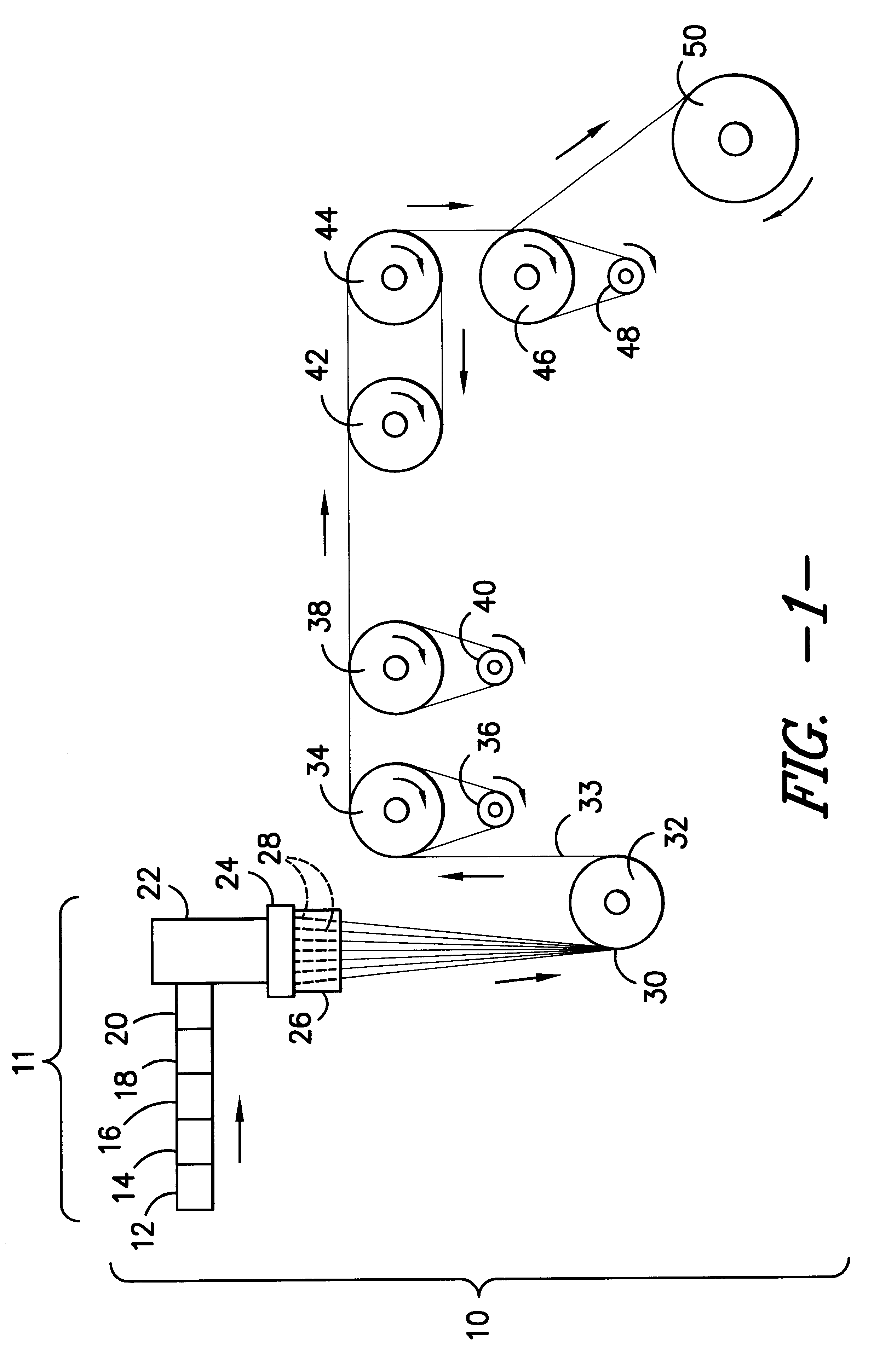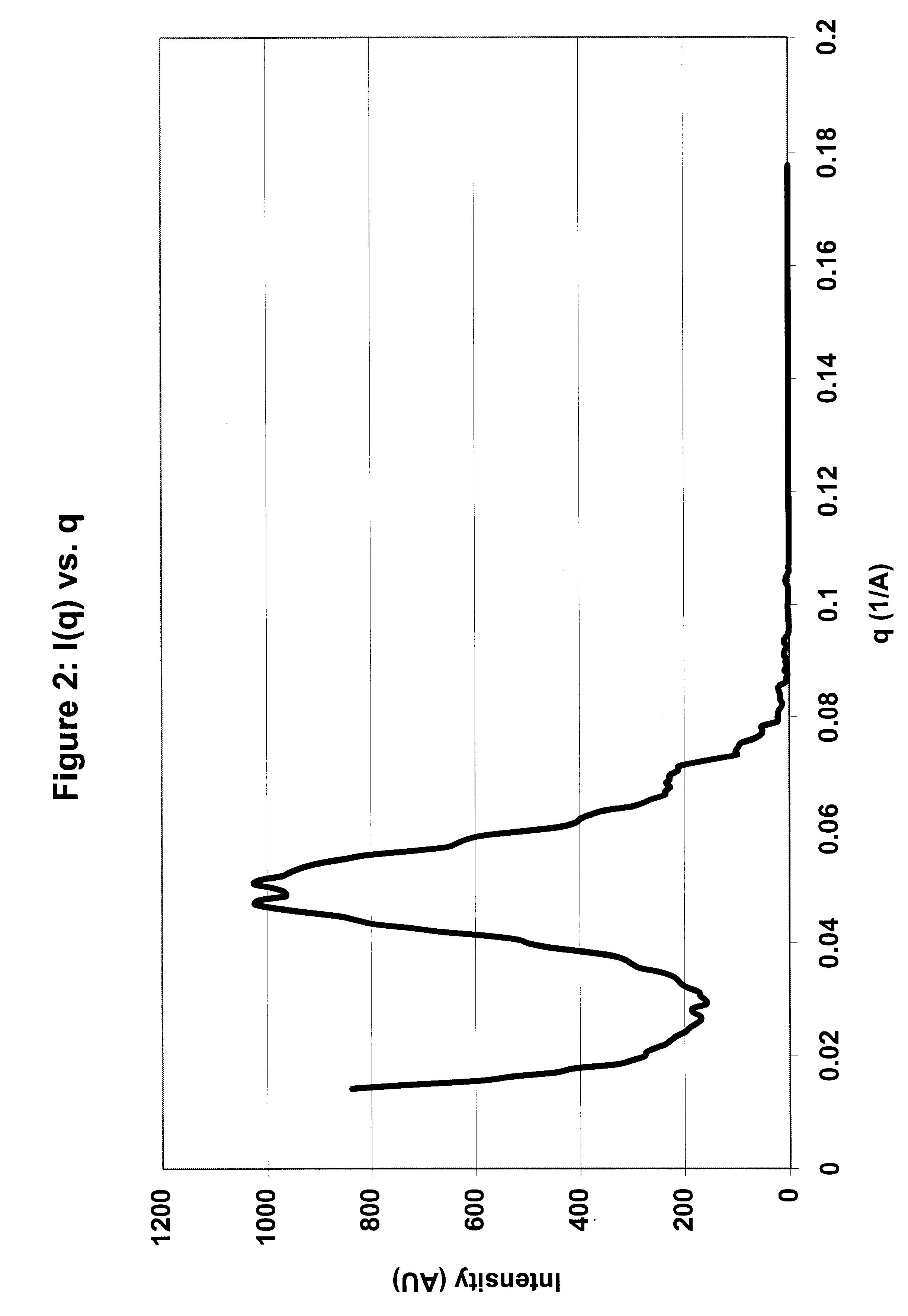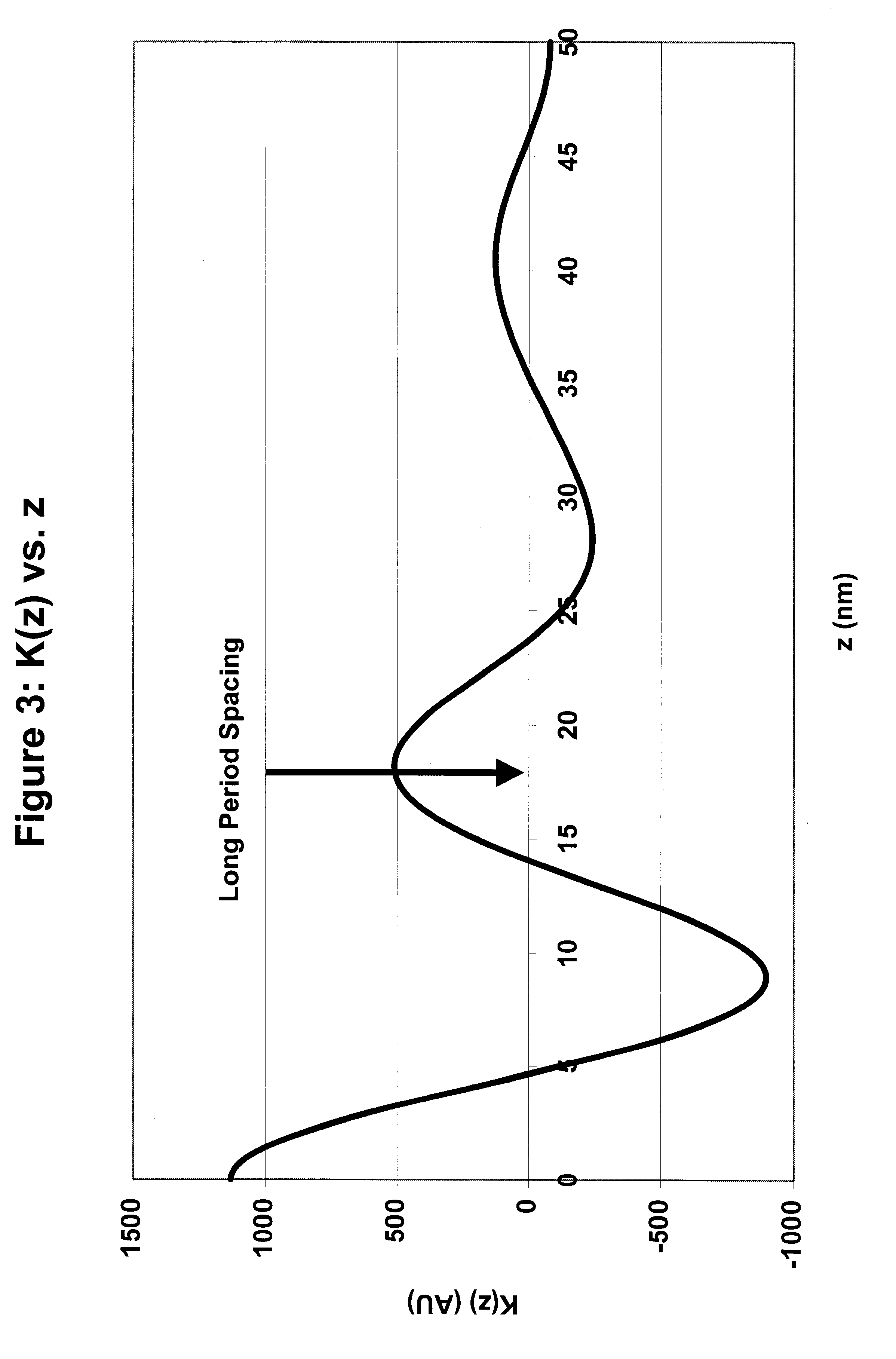Low-shrink polypropylene fibers
a polypropylene fiber, low-shrink technology, applied in fireproof paints, coatings, etc., can solve the problems of high and generally non-uniform heat-and-moisture shrinkage, low utilization and processing efficiency of highly desirable polypropylene fibers
- Summary
- Abstract
- Description
- Claims
- Application Information
AI Technical Summary
Problems solved by technology
Method used
Image
Examples
Embodiment Construction
It is thus an object of the invention to provide improved shrink rates for standard polypropylene fibers. A further object of the invention is to provide a class of additives that, in a range of concentrations, will give low shrinkage. A further object of the invention is to provide a specific method for the production of nucleator-containing polypropylene fibers permitting the ultimate production of such low-shrink fabrics therewith. Accordingly, this invention encompasses a polypropylene fiber possessing at most 5,000 denier per filament and exhibiting a heat-shrinkage in at least 150.degree. C. hot air of at most 11%, wherein said fiber further comprises at least one nucleating agent. Also, this invention encompasses a polypropylene fiber possessing at most 5,000 denier per filament and exhibiting a heat-shrinkage in at least 150.degree. C. hot air of at most 11%, wherein said fiber further comprises at least one nucleating agent, and wherein said fiber further exhibits a long pe...
PUM
| Property | Measurement | Unit |
|---|---|---|
| heat-shrinkage | aaaaa | aaaaa |
| heat shrinkage | aaaaa | aaaaa |
| heat shrinkage | aaaaa | aaaaa |
Abstract
Description
Claims
Application Information
 Login to View More
Login to View More - R&D
- Intellectual Property
- Life Sciences
- Materials
- Tech Scout
- Unparalleled Data Quality
- Higher Quality Content
- 60% Fewer Hallucinations
Browse by: Latest US Patents, China's latest patents, Technical Efficacy Thesaurus, Application Domain, Technology Topic, Popular Technical Reports.
© 2025 PatSnap. All rights reserved.Legal|Privacy policy|Modern Slavery Act Transparency Statement|Sitemap|About US| Contact US: help@patsnap.com



